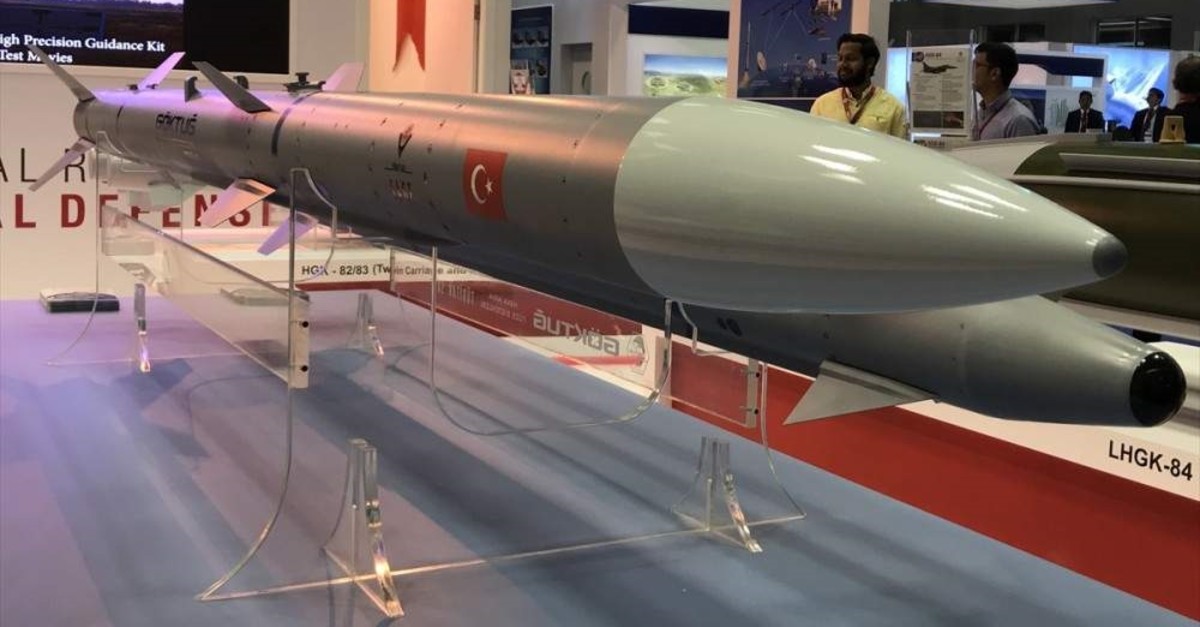Turkey’s missile manufacturer Roketsan recently signed a contract to supply Indonesia with Khan short-range ballistic missiles (SRBMs). It’s the first such export of Turkish-made SRBMs and demonstrates how far Turkey’s missile program has come since its humble beginnings in the latter part of the last century.
“This is a significant weapon system with a range of 280 kilometers and high precision in the battlefield’s depths,” Roketsan’s deputy general manager told Turkish media in November. “The Indonesian military will be the system’s first foreign user.”
Turkish missiles are often overlooked compared to other homegrown systems, especially military drones, which became an international success story in recent years with the export of Bayraktar TB2s to over 20 countries.
As with many other military projects in the country, such as the T129 attack helicopter, Turkey’s SRBM program began with heavy foreign assistance and technology transfers. With the Indonesian contract, Ankara has proven its ability to develop an indigenous missile that it can export.
Many Turkish-developed platforms contain foreign components. Much to Ankara’s embarrassment, it couldn’t export T129s to Pakistan since the engine is American and the US refused to grant the necessary export licenses. On the other hand, when the Philippines wanted the same helicopter, the US agreed. Both episodes demonstrated that the T129 isn’t wholly indigenous, even though it has many Turkish-made components.
More recently, it emerged that brakes made by a Dutch company for ambulances were used in Roketsan surface-to-air missiles. TB2 drones exported to Azerbaijan and used against Armenian forces in the 2020 Nagorno-Karabakh war also contained imaging and targeting systems produced by Canada’s L3Harris Wescam, a violation of the end-use terms under which Canada exported that technology.
Of course, having various foreign or commercially-available components in such systems isn’t uncommon. And Turkey has discernibly made a lot of headway in developing indigenous systems.
The Khan is the export version of the Bora-1 that entered Turkish service in 2017. Before the Bora-1, there was the J-600T Yildirim, which Turkey built in the 1990s. The Yildirim was developed with Chinese technology as part of an agreement under which Beijing permitted Ankara to build B-611 SRBMs under license. That collaboration gave Turkey the experience and know-how to eventually develop its own SRBMs.
Turkey has also been notably more open about its missile program than it used to be. For example, it first paraded J-600Ts in 2007, the first time the Turkish public became aware of their existence. Now, Ankara is seemingly a lot less secretive.
November’s deal with Jakarta came shortly after the test-firing of a hitherto little-known SRBM called the Tayfun (“Typhoon”) over the Black Sea. Maps were shared on Turkish social media showing how the missile could hit any target in Greece. Turkish President Recep Tayyip Erdogan even affirmed they could hit Athens, incurring a stern rebuke from the Greek foreign minister, who condemned “North Korean attitudes.”
Turkey’s prior experience developing and exporting multiple launch rocket systems (MLRS) is similar to its missile program. Roketsan’s TRG-300 Kasirga was based on China’s WS-1B system with some modifications. The system has four 300 mm launch tubes that can hurl rockets at targets up to 80 miles away. Turkey exported the system to Azerbaijan and Bangladesh in recent years.
Indonesia will not likely be the only country to import Turkish SRBMs. After all, these missiles are within the range limits recommended by the Missile Technology Control Regime (MTCR), and buying them wouldn’t incur US sanctions or disapproval.
(Even Iran is reportedly limiting the range of the SRBMs it’s considering supplying Russia to avoid running afoul of UN Security Council Resolution 2231, which, among other things, prohibits countries from purchasing Iranian missiles with ranges exceeding 300 kilometers.)
Since 2017, the US has been legally obligated to impose sanctions on any country that buys Russian weaponry under the Countering America’s Adversaries Through Sanctions Act (CAATSA). More generally, it disapproves of allies buying advanced Chinese military hardware.
Such factors could work in Turkey’s favor. After all, countries buying Turkish SRBMs wouldn’t find themselves under such pressures from Washington. Ankara could even entice potential customers by offering technology transfers, giving them the opportunity to follow in Turkey’s footsteps by developing their own missiles.
By: Paul İddon
Source: Gerçek News



